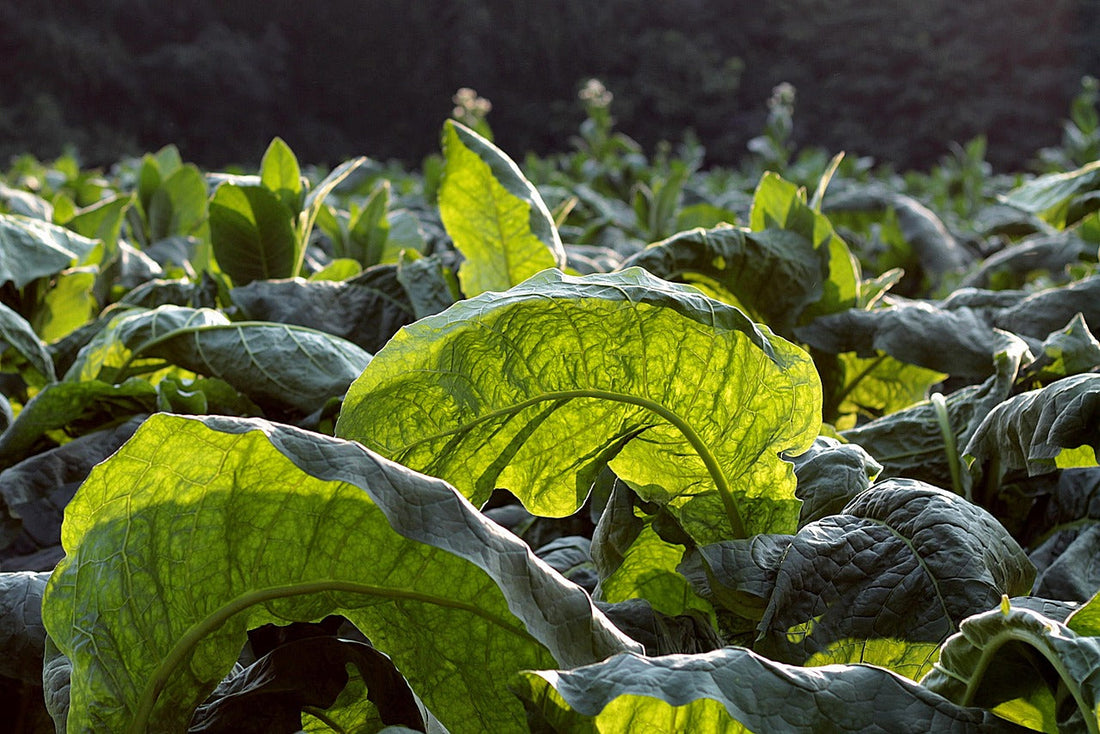
Ceylon Tobacco: A Historical and Cultural Overview
The legacy and future of Sri Lankan’s iconic Crop
Ceylon, known today as Sri Lanka, has a rich history interwoven with the cultivation and trade of various commodities. Among these, tobacco holds an intriguing place, both economically and culturally. This overview explores the significance of Ceylon tobacco, its historical context, and its influence on the region. Tobacco’s introduction to Ceylon marked the beginning of a transformative era for the island. As it took root, the crop not only shaped the agricultural landscape but also became a symbol of the dynamic interactions between local traditions and colonial ambitions. Over the centuries, tobacco became more than just a plant; it was a catalyst for change, influencing trade patterns and social structures.
The cultivation of tobacco in Ceylon was more than an economic activity; it was a reflection of the island's ability to adapt and thrive under changing circumstances. The fertile land of Ceylon, coupled with the strategic manoeuvres of colonial powers, turned tobacco into a pivotal element of the island's prosperity. This agricultural bounty supported communities and drove the development of infrastructure, helping to lay the foundations for modern Sri Lanka.
Despite the decline in its prominence due to health considerations and shifting agricultural priorities, the story of Ceylon tobacco is an integral chapter of the island’s past. It highlights the resilience and ingenuity of its people, who managed to harness the opportunities presented by both the natural environment and the global economy. Through understanding this history, one gains insight into the complexities and nuances that have shaped Sri Lanka's journey from a colonial outpost to a nation with a unique cultural and economic identity.
Historical Background
Tobacco was introduced to Ceylon by the Portuguese in the 16th century. The island's climate and fertile soil proved ideal for tobacco cultivation, leading to its rapid spread and commercial importance. By the 17th century, under Dutch and later British rule, tobacco had become a key cash crop, contributing significantly to the island's economy. The Portuguese were instrumental in integrating tobacco into the agricultural tapestry of Ceylon, recognizing the island's potential for producing high-quality leaves. As European demand for tobacco surged, Ceylon's strategic location along major trade routes further amplified its role in the global market.
During the Dutch period, tobacco's cultivation was meticulously managed to ensure quality and maximise output. The Dutch implemented advanced agricultural techniques and established regulations that controlled production and trade, cementing tobacco's status as a vital economic asset. This period saw the development of infrastructure, such as roads and ports, to facilitate the export of tobacco, marking the beginning of Ceylon's transformation into a key player in international commerce.
Under British rule, tobacco continued to flourish, with plantations expanding and new markets opening. The British capitalized on the groundwork laid by their predecessors, enhancing plantation efficiency and increasing exports. However, they also diversified Ceylon's agricultural focus, gradually introducing other lucrative crops, which eventually led to the decline of tobacco's dominance.
Throughout these transitions, tobacco remained a cultural mainstay, ingrained in social customs and traditions. Its journey from a novel plant to a cornerstone of Ceylon's economy and culture underscores the island's resilience and its ability to adapt to changing global dynamics. As we reflect on this history, the story of tobacco in Ceylon offers a window into the broader narrative of colonial influence, economic development, and cultural evolution that has shaped Sri Lanka.
Colonial Influence
The colonial powers saw tobacco as a lucrative commodity. The Dutch East India Company, in particular, established strict controls over tobacco cultivation and trade to maximize profits. Their influence led to the establishment of organized plantations, which laid the groundwork for the commercial agriculture systems that followed. The meticulous management and regulation of tobacco by the Dutch not only boosted the island's economy but also set a precedent for agricultural practices in Ceylon. These plantations were characterized by their efficient use of land and labour, driven by the high demand for tobacco in European markets. This period of Dutch control was marked by innovation and adaptation, as new techniques were introduced to improve yield and quality.
The British, upon taking control, further expanded on these systems. They recognized the potential for profit and invested in infrastructure, such as transportation and storage facilities, to support large-scale production and export. The British era saw a diversification of crops, but tobacco remained a significant contributor to the economy, intertwining with the social and cultural fabric of Ceylon.
Throughout these colonial transitions, tobacco was not just an economic asset but also a symbol of the island's strategic importance. The cultivation of tobacco facilitated the development of communities and the mingling of different cultures, as labour was sourced from various parts of the island and beyond. This blending of influences contributed to the rich cultural tapestry of Sri Lanka, where tobacco became more than just a crop; it was a part of everyday life, from social rituals to economic sustenance.
The legacy of tobacco cultivation during colonial times is a testament to the island's ability to adapt and thrive amidst external influences. It highlights the resilience of its people and their capacity to harness opportunities from the global economy, shaping a unique path that has contributed to Sri Lanka's modern identity.
Economic Impact
Tobacco served as a major export product, alongside tea and rubber, and played a crucial role in the economic development of Ceylon. Farmers, particularly in regions like Jaffna, relied heavily on tobacco cultivation for their livelihoods. The crop provided employment opportunities and contributed to the island's revenue through taxes and trade. This agricultural dependency on tobacco fostered a robust local economy, enabling communities to thrive and invest in other sectors. The revenue generated from tobacco trade supported public infrastructure projects, such as the construction of roads and schools, which further facilitated economic growth.
Moreover, tobacco's economic significance extended beyond mere financial aspects; it also encouraged the development of related industries, such as packaging and transportation, creating a ripple effect that boosted employment and innovation across the island. The skills and knowledge gained from tobacco cultivation allowed farmers to adapt to other crops, demonstrating the versatility and resilience of Ceylon's agricultural workforce.
As a catalyst for economic expansion, tobacco's influence was felt across various facets of society, contributing to the modernization of Ceylon and laying the groundwork for its future economic endeavours. Despite its decline in prominence, the historical impact of tobacco on Ceylon's economy is a testament to the island's dynamic capacity to leverage its resources and navigate the shifting tides of global trade.
Transition to Modern Agriculture
While tobacco was once a dominant crop, its significance has waned in contemporary times. The focus in Sri Lanka has shifted towards other agricultural products, such as tea, which has become the country's primary export. However, the legacy of tobacco cultivation remains a testament to the island's adaptive agricultural practices and economic resilience.
Cultural Significance
Beyond its economic impact, tobacco has also played a role in the cultural fabric of Ceylon. It features in traditional practices and social customs, often consumed in the form of cigars or chewed with betel leaves. This cultural practice highlights the integration of tobacco into daily life and its role in social interactions.
Health Considerations
In modern times, global awareness of the health risks associated with tobacco use has led to a decline in its cultivation and consumption. Sri Lanka has implemented strict regulations to control tobacco production and sales, reflecting a global trend towards healthier lifestyle choices.
Conclusion
Ceylon tobacco, with its historical roots and economic contributions, remains an integral part of Sri Lanka's heritage. While its prominence has diminished, understanding the role of tobacco in Ceylon's history offers valuable insights into the island's colonial past, economic transformations, and cultural practices. As Sri Lanka continues to evolve, the legacy of tobacco serves as a reminder of the complex interplay between agriculture, economy, and culture. The story of Ceylon tobacco is not just about cultivation and trade; it is about the resilience of a nation and the adaptability of its people. It highlights how an agricultural product can shape, and be shaped by, the forces of history and society. As Sri Lanka moves forward, embracing new agricultural opportunities and innovations, the lessons learned from tobacco's past remain relevant. They provide a framework for navigating future challenges and opportunities, ensuring that the island continues to thrive amidst ever-changing global dynamics.
In essence, the tale of tobacco in Ceylon is a reflection of a broader human experience: the ability to adapt, to learn, and to grow from the past while forging a path towards a sustainable and prosperous future. This narrative of resilience and transformation is a testament to the enduring spirit of Sri Lanka, a nation that continues to build upon its rich tapestry of history and culture.
